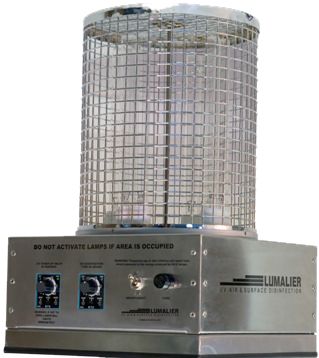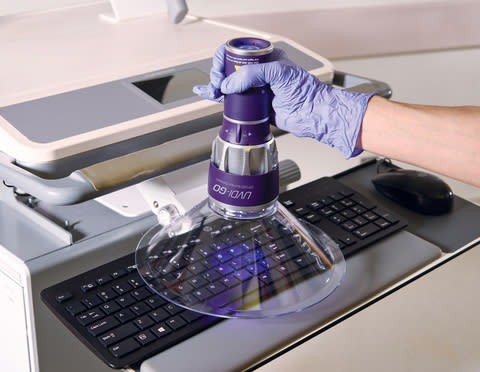Using the Power of UV Surface Disinfection: A Comprehensive Guide for Healthier Spaces
Using the Power of UV Surface Disinfection: A Comprehensive Guide for Healthier Spaces
Blog Article
Utilizing the Potential of UV Sanitation: Safeguarding Health and Health
UV sanitation, a technology commonly used in different sectors, has actually shown reliable in removing hazardous virus. From understanding the systems at play to applying this technology in our daily lives, this discussion aims to lose light on the possibility of UV sanitation and its role in securing our wellness and health.
Understanding UV Disinfection
UV disinfection is an extremely reliable and extensively used method for guaranteeing and getting rid of dangerous virus wellness and health. This strategy makes use of ultraviolet (UV) light to suspend microbes by harming their DNA and preventing them from recreating. UV disinfection is specifically reliable versus microorganisms, infections, and various other bacteria that can trigger illness and infections.
The principle behind UV disinfection is simple yet powerful. When UV light is released at a certain wavelength, it permeates the microorganism's cell wall and interrupts its hereditary material. This process, called photodissociation, causes the development of thymine dimers, which stop the bacterium from replicating and rendering it safe. UV disinfection can be applied in numerous setups, including water treatment plants, medical care centers, food processing sectors, and air filtration systems.
One of the benefits of UV sanitation is its ability to properly and effectively eliminate a variety of pathogens without the requirement for chemicals or additives. Unlike various other disinfection approaches, such as chlorine or ozone, UV disinfection does not present unsafe spin-offs or chemical residues right into the atmosphere. In addition, UV disinfection is a non-contact procedure, which indicates that it does not require physical call with the microorganisms, decreasing the danger of cross-contamination.

The Science Behind UV Sanitation
The effectiveness of UV sanitation hinges on its capability to interfere with the genetic product of microorganisms, making them incapable to replicate and consequently eliminating their dangerous potential. UV, or ultraviolet, radiation is a type of electro-magnetic radiation with wavelengths shorter than noticeable light. It is classified into three kinds: UV-A, uv-c, and uv-b. UV-C radiation, especially, has the shortest wavelength and the greatest power. Since it can permeate the cell wall surfaces of microbes and harm their DNA or RNA., this high-energy UV-C radiation is most effective in disinfection applications.
When bacteria are revealed to UV-C radiation, the power is absorbed by their hereditary product, creating bonds to damage and creating chemical responses that interrupt their capability to replicate. This stops the microbes from reproducing and spreading out infection. UV disinfection is particularly effective versus infections, bacteria, and fungi, consisting of typical pathogens such as Escherichia coli, Salmonella, and Flu.
The scientific research behind UV disinfection is supported by extensive study and research studies. It has been revealed that exposure to a sufficient dosage of UV-C radiation can accomplish a high level of sanitation, commonly surpassing 99.9% efficacy in eliminating bacteria. However, it is necessary to note that the effectiveness of UV sanitation depends on numerous aspects, including the strength of UV-C radiation, exposure time, range from the UV source, and the sensitivity of the microorganism to UV radiation.
Applications of UV Disinfection
Offered the comprehensive study and efficacy of UV sanitation in disrupting the hereditary material of bacteria, it is essential to check out the numerous practical applications of this innovation. UV sanitation has verified to be a valuable tool in a large range of markets where keeping a risk-free and tidy environment is vital.
One significant application of UV disinfection is in health care setups. UV light can be made use of to disinfect surfaces, devices, and also the air in hospitals and medical facilities. This assists to minimize the threat of healthcare-associated infections and ensures a safer atmosphere for clients and healthcare workers.
One more crucial application remains in the food and drink sector. UV sanitation is made use of to deal with water and eliminate hazardous microorganisms, such as E. coli and Salmonella, from the production process. uv surface disinfection. This makes sure the security and high quality of the items we take in
UV sanitation is likewise commonly utilized in water treatment plants and wastewater treatment facilities. It is an effective method for destroying dangerous bacteria, infections, and parasites that can be existing in water resources. This helps to give safe and tidy alcohol consumption water to areas and shield the environment from contamination.
Additionally, UV sanitation is used in the pharmaceutical market to decontaminate equipment and keep the integrity of items. It is likewise utilized in labs and research centers to protect against contamination and ensure exact results.
Advantages of UV Disinfection Modern Technology
One noteworthy benefit of employing UV sanitation innovation is its capability her explanation to efficiently eradicate microorganisms without the usage of extreme chemicals. This is especially beneficial in numerous setups, such as health care facilities, water therapy plants, and food processing industries, where the visibility of dangerous microorganisms poses a substantial danger to public health and safety and security.
Unlike standard disinfection approaches that rely upon chemicals like chlorine or ozone, UV disinfection modern technology uses ultraviolet light to target and destroy the DNA of bacteria, successfully neutralizing their capability to reproduce and cause infections. This procedure not only removes the need for possibly hazardous chemicals yet likewise lowers the danger of chemical deposit or byproducts continuing to be in the treated atmosphere.

Furthermore, UV disinfection innovation is ecologically pleasant. As it does not depend on using chemicals, it gets rid of the need for their manufacturing, disposal, and transport, minimizing the total carbon impact linked with sanitation procedures. In addition, UV sanitation systems have a longer life-span contrasted to chemical-based techniques, leading to much less regular replacement and additional decreasing webpage waste.
Executing UV Disinfection in Life
To efficiently execute UV disinfection in everyday life, companies and people can integrate mobile UV sterilizing devices into their health regimens and cleaning up methods. These devices are designed to produce ultraviolet light, which has been confirmed to eliminate or inactivate a large range of microbes, consisting of fungi, bacteria, and infections. By utilizing mobile UV disinfecting gadgets, people can decontaminate frequently touched surfaces and things, such as mobile phone, doorknobs, tricks, and laptops, decreasing the danger of spreading germs and infections.
Along with integrating mobile UV sterilizing tools, it is crucial to follow appropriate standards and suggestions for reliable UV disinfection. This consists of ensuring that the gadget is used properly and for the advised duration to accomplish optimal disinfection outcomes. It is also critical to prioritize precaution, such as using safety eyewear and staying clear of straight exposure of the UV light to the skin.

Moreover, organizations can execute UV disinfection modern technology in numerous setups to enhance health techniques. Healthcare facilities and health care centers can use UV disinfection robotics to sterilize patient spaces, operating cinemas, and other high-touch locations. Food processing industries can incorporate UV disinfection systems right into their assembly line to boost food security and prevent contamination.
Final Thought
In verdict, UV sanitation technology holds excellent possible in safeguarding health and wellness and health. With its countless benefits, UV disinfection is an important tool for preserving a healthy and balanced and clean environment.
Unlike other disinfection techniques, such as chlorine or ozone, UV sanitation does hop over to these guys not present unsafe by-products or chemical residues into the environment. It is essential to note that the efficiency of UV sanitation depends on various elements, including the strength of UV-C radiation, exposure time, distance from the UV resource, and the sensitivity of the microbe to UV radiation.
One more benefit of UV sanitation technology is its capability to offer rapid and continuous disinfection. Unlike manual cleansing approaches, which can be taxing and call for considerable labor, UV sanitation systems can be automated and operate continuously, guaranteeing consistent disinfection without human treatment.To properly apply UV sanitation in day-to-day life, people and companies can include mobile UV sterilizing gadgets into their health regimens and cleaning practices.
Report this page